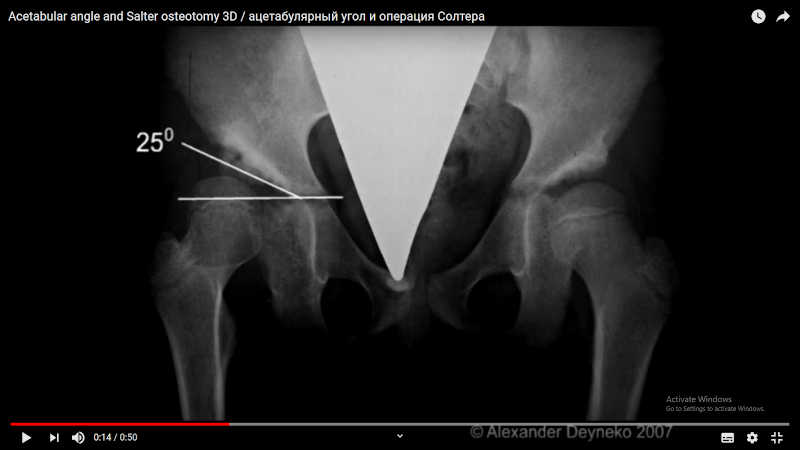Acetabular angle (or index) plays important role in diagnostic of different conditions and diseases of the hip joint. Sometimes it plays critical role in diagnostic of developmental hip dysplasia, congenital hip dislocation etc. Sharp angle is another indicator of the acetabulum deformation. In the classical variant of measurement lateral point of most lateral part of the acetabulum is used. But in case of acetabular deformation this classical method is not always accurate. This inaccuracy could be due upper middle part of acetabular cup deformation only. We agree with some authors that for determination of acetabular angle or sharp angle lateral point of subchondral (subcartilaginous) sclerosis of the acetabulum could be used.
Below we give an example the three-dimensional dynamic model that was built on the results of CT of 8 y.o. patient with developmental hip dysplasia. Also X-ray of this patient is presented. This 3D model can allows the simulation of pelvic correcting osteotomy like Salter’s operation.
In case of the classical method of determination of acetabular angle this value is 25 degree. But in case of modified method this value is 35 degree. The second method better reflects the condition of the acetabulum.
* – More detailed this information (incl. links of other authors publications, conclusion etc) is given in thesis:
Deyneko A.N. Surgical treatment of hip dysplasia in children of the school age: Dissertation. – Saint-Petersburg, 2007. – 240 p.
or in monograph:
Baindurashvili A.G., Krasnov A.I., Deyneko A.N. Surgical treatment children who have congenital hip dysplasia. SpecLit, St.Petersburg. 2011. – 104 p. [ISBN: 978-5-299-00453-3]
